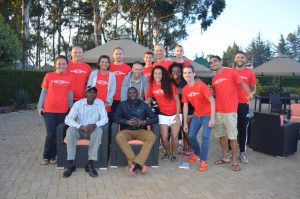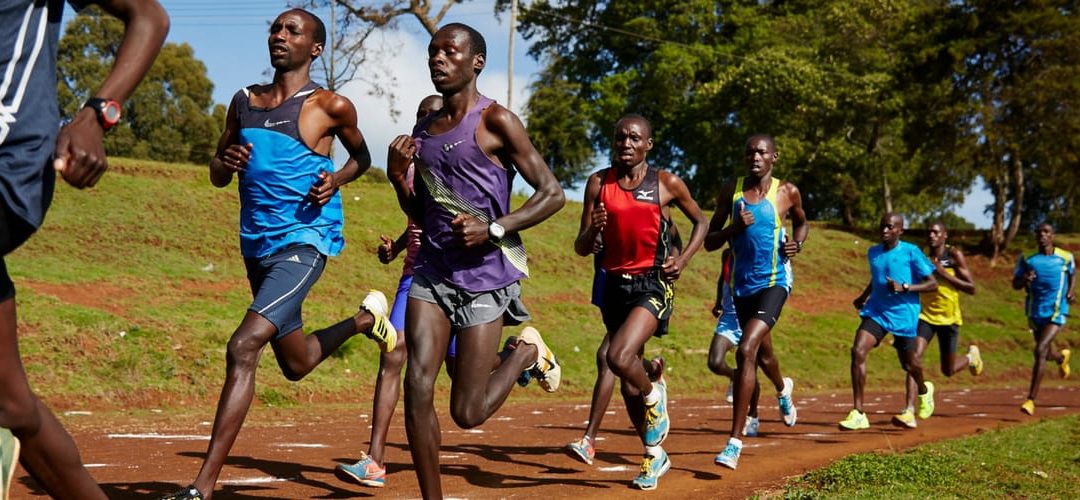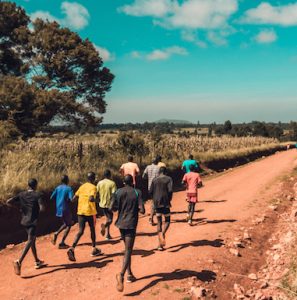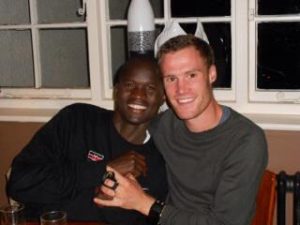[Train the Kenyan Way Blog Series]
In our last blog Callum wrote an excellent article on the oft misunderstood ‘recovery run’ and how it is used by Kenyan runners in Iten. This led me look at my own approach to these runs and question whether things I had taken for granted for many years were in fact incorrect.
If you haven’t seen Callum’s article yet then check it out here [https://www.traininkenya.com/2018/05/31/recovery-running-whats-the-point/].
The summary points from Callum’s research appear to be that the term ‘recovery run’ is pretty much a misnomer and there is really no such thing. From what we can see so far recovering from running appears to take place exclusively outside of the process of running itself. To call a run a ‘recovery run’ is simply an inaccurate description. There is no improvement in recovery by going for a slow run over sitting on the sofa and, guess what, recovering.
This challenged my own thinking as I have long been a proponent of the recovery run both for myself and athletes I have coached. I am also very confident that they do in, my situation at least, work. Meaning, I do feel better (more recovered) the day after a recovery run, so what to do? Rather than throw the recovery run out with the bathwater, it appears that I should continue exactly as I have been up until now, only now equipped with a better understanding of what is actually going on.
Apparently my slow jogs the day after a hard session have not been improving my recovery. However, they have also not been hindering the recovery process. Furthermore they have promoted (some of) the benefits that this type of low intensity training can bring (see Callum’s piece for further explanation of what these are).
That seems to be the key message here; Slow running post hard running is not actually a way of recovering, but if done well it does not interfere with your recovery either and does have independent benefits of it’s own.
But the key is that you must be running easily enough that you can indeed still recover. Many runners will be sacrificing their recovery through a reluctance to run slowly/easily enough on these runs. They may call them a ‘recovery run’ but are they working too hard to allow their bodies optimal recovery. In which case you would be better off doing nothing and just taking the complete rest.
It seems that the Kenyan runners and their intuitive ‘listen to your body’ approach to training has proven advantageous once again. They run without the burden of masses of contrasting information leaving them confused, and without the social pressure of needing to prove themselves in training via various online apps and platforms. It is far more simple for the runners in Iten; They have discovered through trial and error that they feel better for taking their recovery runs very slowly, and, that they get fitter for doing this rather than doing nothing at all. These runs are known in Kenya as ‘Pole Pole’ (pronounced more like ‘Pol-eee Pol-eee’) meaning ‘slowly by slowly’ and it is a type of run which Kenya’s best runners are using on an almost daily basis, after a more intense and serious run in the AM, afternoons are reserved for Pole Pole jogging.
For the mere mortals among us who are not running twice a day you won’t need these as often as that. A simple rule of thumb is as follows: If you usually run the day after a hard workout then you should be using this type of training on those days. If you usually rest the day after a hard workout then you don’t need to worry about this.
The conundrum we now face is to figure our what is too hard and how do you know if you are sacrificing your recovery? Callum suggested a benchmark of not above 60% max heart rate as guideline. This is a good starting place especially if this is new to you. I don’t use heart rates in training myself and prefer the Kenyan method of training by feel, this in itself takes practice. My advice is that you need to trial these types of runs and monitor how you feel after them. The key is not to be scared to go slower than you currently think is the right pace. Try it out over a period of weeks and consider how you feel the day after and the day after that. Don’t be afraid to question your status quo and see if there might be ways of doing things differently which can help enhance your performance as a runner.
For me, it’s not about a set pace, it’s about the pace which feels easiest on that given day. Sometimes, after a really intense interval session or a long hard tempo run that means barely above walking pace (true Kenyan style), but on other recovery days the easiest pace is sometimes a bit faster and not so different to a standard ‘easy’ day. The important factor is having the self confidence to go as easily as you need to and not getting caught up in someone else’s training or in trying to impress your friends with how good your online training diary looks.
Give it a try and let us know how you get on.
Thanks for reading
Gavin
——————————————————————————————————————————————————
About the Author:
Gavin Smith is the Co-Founder of The Kenya Experience, a distance runner and formerly a coach to some of Kenya’s most decorated athletes. He graduated from Loughborough University in 2007 and lived in Iten Kenya from 2010 – 2014 where he was Assistant Coach to Renato Canova one of the worlds most celebrated distance running coaches.
——————————————————————————————————————————————————
 Our running camps provide an inspirational location, expert coaching and a supportive group environment for runners of all levels.With an emphasis on ‘doing it the Kenyan way’ the camps include guided runs, practical workshops and an exciting itinerary outside of the actual training itself which will immerse you inside the Kenyan running scene. You will meet and learn from top Kenyan runners & coaches and interact with the local community in Iten under the guidance of our expert staff.
Our running camps provide an inspirational location, expert coaching and a supportive group environment for runners of all levels.With an emphasis on ‘doing it the Kenyan way’ the camps include guided runs, practical workshops and an exciting itinerary outside of the actual training itself which will immerse you inside the Kenyan running scene. You will meet and learn from top Kenyan runners & coaches and interact with the local community in Iten under the guidance of our expert staff.
Want to know more? Click here for details on our training camps




Recent Comments